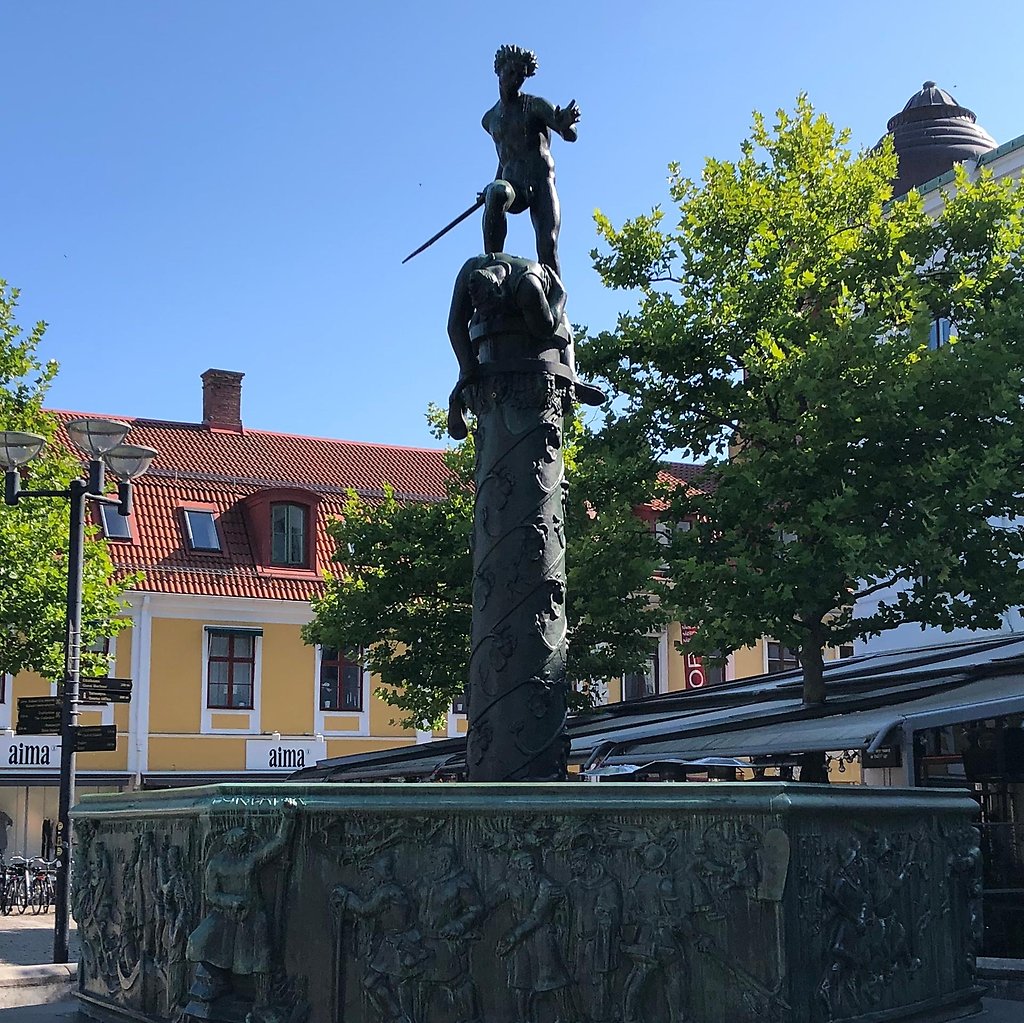places of interest
Few cities can pride themselves for having as many sights as Kalmar. How about the ruins of the city wall, from the 1600s? Magnificent squares, or the bridge across to Öland? These are a few of the unique Kalmar highlights.
.jpg)
Old Town
The Medieval town of Kalmar, the Old Town, is located right next to Kalmar Castle. Here, you can stroll through the meandering alleys, and see some very well-preserved 18th and 19th century buildings. Beneath your feet, two and a half metres below ground, are the remains of the Medieval city.
.jpg)
The old cemetery
The Old Cemetery is the oldest preserved in Kalmar. It was created in the first half of the 13th century. Today, there are stones here marking the location of the Saint Nicholas Church, or Village Churh,which stood here until the 1670s, when it was demolished.
.jpg)
The City Park
The city park was laid out in 1877-1880, funded by a donation from merchant Johan Jeansson. The park was meant to become one of the city’s local beauty spots, as well as a place with a salubrious effect on the townspeople. The city park is laid out in the style of a romantic English park, with nature as the guiding inspiration for its design.
.jpg)
The old water tower on Kvarnholmen.
Kvarnholmen
Kvarnholmen is the well-preserved city centre of Kalmar. The town was moved here in the mid-1600s, and the city wall was built around it. The buildings inside vary a great deal. Impressive structures like the Kalmar Cathedral blend with charming cottages and unique buildings, such as the old water tower and Klapphuset.
.jpg)
The city wall on Kvarnholmen.
The city wall
On Kvarnholmen are remains of the 17th century city wall, both to see and walk on. The fortress was closed down in the late 1700s, and the city gates were removed. For the first time in history, Kalmar became an open city. In the 19th century, large sections of the walls were demolished, as they were in great disrepair.
.jpg)
Västerport
The magnificent city gate known as Västerport, or the Main Guard as it is also known, was finished in 1658, and was the main entrance to Kvarnholmen as late as 1870. For many years, the city’s defence forces were housed inside its vaults. Today you will find other enterprises here, including restaurants, a spa, and a manufacturer of art and utility glassware.
.jpg)
The cathedral located on the main square.
The Main Square
The main square, Stortorget, was laid out in the mid-1600s, and is one of the best preserved Baroque squares in Sweden. In the north section of the square, the cathedral was placed as a symbol of spiritual power, and in the south section was the city hall, the symbol of worldly power. The square underwent a major restoration in the early 2000s.

Larmtorget
Larmtorget, literally “the alarm square” is where the city's troops would gather at any alarm, to quickly man their positions. Here, you will find the fountain sculpture Vasabrunnen, from 1926. When the railway was extended all the way to Kalmar in the late 1800s, the city centre was moved further west, and Larmtorget was made the new rallying-point instead of the main square.
.jpg)
Lilla torget
This is Kalmar’s smallest town square, and one of the best-preserved 17th century neighbourhoods. Here are three Carolean stone houses: Domprostgården (The Dean’s Manor), Residenset (The County Governor’s house) and the Dahm house. Another interesting building in this area is one of the oldest houses in Kalmar, allegedly moved here from the old Medieval city next to the castle.
.jpg)
Sculpture Kattpar on the beach Kattrumpan.
Kattrumpan
Kattrumpan, “the cat’s butt,” is a charming neighbourhood in east Kvarnholmen. The origins of its name are much-debated. It might be derived from the old word katt, meaning a raised part of the defence walls. Another, more popular explanation is that the original street plan for Kvarnholmen looked much like a catskin on tenterhooks, with this part of town as the cat’s butt.
.jpg)
The Öland Harbour – The Kalmar Guest harbour
The Öland harbour was finished in the 1870s, and became the new harbor for the ferries that ran between Kalmar and Färjestaden. The ferries saw their heyday in the 1970s, with as many as 50 departures daily during the summer. The ferries ceased to run in 1972,when the Öland bridge was opened. Today, the harbour is popular among visiting owners of pleasure crafts.
.jpg)
The Öland Bridge
The construction of the Öland bridge officially began on December 30th, 1967. The bridge was opened on September 30th, 1972. It is built from reinforced concrete. Of the entire construction, only 1/3 is visible - the rest is below the water. The bridge is 6 072 metres long, and 13 metres wide. At the highest point, the bridge is 41.6 metres tall, and 6 metres at its lowest.
More inspiration
Page published by: Destination Kalmar
